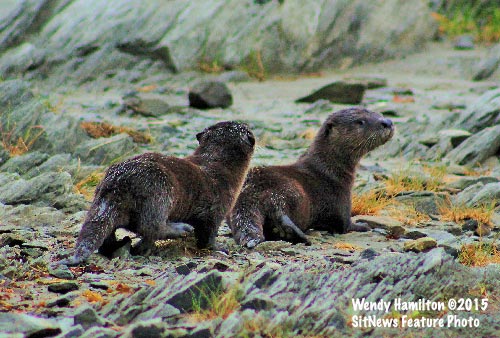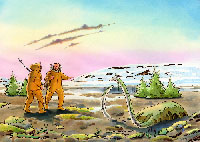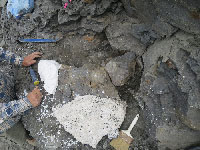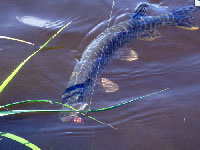










 Weekly Specials
Weekly Specials |




 Contact Contact 
 Call 617-9696 Call 617-9696
 Webmail
Letters Webmail
Letters
 News Tips News Tips 
 Copyright Info Copyright Info
 Archives Archives
Quick News
Search
 Alaska Alaska
 Ketchikan Ketchikan
 SE Alaska SE Alaska
 Alaska News Links Alaska News Links
Columns
- Articles
 Dave Kiffer Dave Kiffer
 Fish
Factor Fish
Factor
 Money Matters Money Matters
Historical
Ketchikan
 June Allen June Allen
 Dave
Kiffer Dave
Kiffer
 Louise
B. Harrington Louise
B. Harrington
Ketchikan
Arts & Events
 Ketchikan
Arts Ketchikan
Arts
 Ketchikan
Museums Ketchikan
Museums
 KTN Public
Library KTN Public
Library
Sports
 Ketchikan Links Ketchikan Links
Public Records
 FAA Accident Reports FAA Accident Reports
 NTSB
Accident Reports NTSB
Accident Reports
 Court Calendar Court Calendar
 Recent Filings & Case Dispositions Recent Filings & Case Dispositions
 Court Records Search Court Records Search
 Wanted:
Absconders Wanted:
Absconders
 Sex Offender Reg. Sex Offender Reg.
 Public Notices Public Notices
Weather,
Webcams
 Today's
Forecast Today's
Forecast
 KTN
Weather Data KTN
Weather Data
 AK
Weather Map AK
Weather Map
 AK Weathercams AK Weathercams
 AK Earthquakes AK Earthquakes
TV Guide
 Ketchikan Ketchikan
Ketchikan
Phone Book
 Yellow
Pages Yellow
Pages
 White
Pages White
Pages
Government
Links
 Local Government Local Government
 State & National State & National

|
|

Wednesday
July 22, 2015

|
Otter Pups
Under mother otter's close watch, her two otter pups played on their own near Mountain Point.
Front Page Photo By WENDY HAMILTON ©2015
Click Here to express your appreciation to the photographer and select your Favorite Front Page Photo(s) of the Month
(Submit your photograph to be featured on the SitNews' front page. Email photo to editor@sitnews.us include your name and a brief photo description.)
Alaska: Genome analysis pins down arrival and spread of first Americans; Comparing current and ancient genomes shows Siberian migration no earlier than 23,000 years ago - The original Americans came from Siberia in a single wave no more than 23,000 years ago, at the height of the last Ice Age, and apparently hung out in the north - perhaps for thousands of years - before spreading in two distinct populations throughout North and South America, according to a new genomic analysis.

This is an artist's representation of the ice age landscape that early Native Americans would have encountered.
Artwork by Sussi Bech
The findings, which will be reported in the July 24 issue of Science, confirm the most popular theory of the peopling of the Americas, but throws cold water on others, including the notion of an earlier wave of people from East Asia prior to the last glacial maximum, and the idea that multiple independent waves produced the major subgroups of Native Americans we see today, as opposed to diversification in the Americas.
"Our study presents the most comprehensive picture of the genetic prehistory of the Americas to date. We show that all Native Americans, including the major sub-groups of Amerindians and Athabascans, descend from the same migration wave into the Americas. This was distinct from later waves that gave rise to the Paleo-Eskimo and Inuit populations in the New World Arctic region," says Dr. Maanasa Raghavan, a postdoctoral researcher at the Centre for GeoGenetics and one of the lead authors of the study.
"We applied several statistical methods that differ in modeling or utilize different information in the data. That we obtained consistent results across different methods is significant and reassuring," says Professor Yun Song at UC Berkeley, a co-author of the study.
Since Amerindians and Athabascans were part of the same migration into the Americas, the current genetic differences observed between them would have emerged sometime after 23,000 years ago.
This Ice Age migration over a land bridge between Siberia and Alaska is distinct from the arrival of the Inuit and Eskimo, who were latecomers, spreading throughout the Artic beginning about 5,500 years ago.
The findings also dispel the idea that Europeans contributed to the genetic heritage of Native Americans.
Modern and ancient genomes
The data consisted of the sequenced genomes of 31 living Native Americans, Siberians and people from around the Pacific Ocean, and the genomes of 23 ancient individuals from North and South America, spanning a time between 200 and 6,000 years ago.
"There is some uncertainty in the dates of the migration and the divergence between the norther and southern Amerindian populations," Song noted, "but as we get more ancient genomes sequenced, we will be able to put more precise dates on the times of migration."
The international team concluded that the northern and southern Native American populations diverged between 11,500 and 14,500 years ago, with the northern branch leading to the present day Athabascans and Amerindians broadly distributed throughout North America. The southern branch peopled Central and South America, as well as part of northern North America.
"The diversification of modern Native Americans appears to have started around 13,000 years ago when the first unique Native American culture appears in the archeological record: the Clovis culture," said Nielsen. "We can date this split so precisely in part because we previously have analyzed the 12,600-year-old remains of a boy associated with the Clovis culture."
One surprise in the genetic data is that both populations of Native Americans have a small admixture of genes from East Asians and Australo-Melanesians, including Papuans, Solomon Islanders and Southeast Asian hunter gatherers.
"It's a surprising finding and it implies that New World populations were not completely isolated from the Old World after their initial migration," said Eske Willerslev from the Centre for GeoGenetics at the Natural History Museum, University of Copenhagen, who headed the study. "We cannot say exactly how and when this gene flow happened, but one possibility is that it came through the Aleutian Islanders living off the coast of Alaska." - More...
Wednesday PM - July 22, 2015 |
|
Alaska: First elasmosaur specimen excavated in Alaska By THERESA BAKKER - A recent expedition to the Talkeetna Mountains by the University of Alaska Museum of the North has uncovered a new marine reptile fossil from the Age of Dinosaurs known as an elasmosaur.

An articulated portion of the spine extends into the hill to the right of the small plaster jacket. The larger plaster jacket contains part of the elasmosaur’s scapula.
Photo by Pat Druckenmiller
Earth sciences curator Patrick Druckenmiller said elasmosaurs are a type of plesiosaur with extremely long necks and two pairs of paddle-like limbs used to swim under water. They lived during the Late Cretaceous period about 70 million years ago. “Picture the mythical Loch Ness monster and you have a pretty good idea what it looked like. This is an exciting find because it is the first time an elasmosaur has ever been discovered in Alaska.”
Over the past few years, Curvin Metzler, an Anchorage-based fossil collector, found several vertebrae from the skeleton eroding out of a bluff. He’d been hiking in the area for 25 years and this was the first vertebrate fossil he found there. When Metzler, Druckenmiller and two others visited the site in June, they were able to identify the source of the bones in the hillside and collect a good portion of the skeleton.
“I’m mostly interested in finding invertebrates, so when I saw the first vertebra I knew it was a bone from something,” Metzler said. “I didn’t want to disturb anything in the cliff so it was exciting to talk to Pat. We are lucky to have someone in the state who works with fossils.”
Even though the new elasmosaur is a first for the state, Druckenmiller has collected plesiosaurs from all over western North American and is one of the world’s marine reptile fossil experts. In 2010, he led a team that collected a nearly complete elasmosaur skeleton from Montana, which is currently on display as part of the museum’s “Expedition Alaska: Dinosaurs” exhibit in Fairbanks.
“I was really excited the first time Curvin showed me one of its bones,” he said. “I recognized it as a vertebra from the base of the animal’s neck and wanted to visit the site to see if we could find more. Based on the size of the bones we excavated, the animal should be at least 25 feet long.” - More...
Wednesday PM - July 22, 2015
|
|
Alaska Science: Ancient northern pike found in lake mud By NED ROZELL - While slicing a cylinder of mud he pulled from an Interior Alaska lake, Matthew Wooller ran into a snag. The wire he was using to cut the mud stopped when it hit something solid. He grabbed a knife, carved around the obstruction, and made a discovery.

A northern pike caught at the mouth of the Kandik River.
Photo by Ned Rozell.
"There were a bunch of bones and very sharp teeth sprouting from the lake mud," said Wooller, the head of the Alaska Stable Isotope Facility at UAF.
Suspecting the pinky-size fragment of a toothy creature was thousands of years old, Wooller ran it up to the UA Museum of the North. There, experts could tell him whether the bone was fish or fowl.
Andres Lopez, curator of fishes, recognized the jawbone of a northern pike, a duck-billed, needle-toothed super predator among freshwater fishes.
"The chance of putting the 4-centimeter barrel of the coring head through a skull like this . . . I have never seen this before," Wooller said.
The pike jawbone was not something Wooller imagined within a 20-foot-long plug of sediment he and his colleagues pulled from Quartz Lake a few winters ago. Much smaller things within the core — ancient birch and spruce seeds, shells of tiny clams and bits of charcoal — were the gold Wooller was mining. The carbon dates from those things told him the lake formed about 11,000 years ago. - More...
Wednesday PM - July 22, 2015
|
|
Columns - Commentary
TOM PURCELL: How to Rack Up Debt - "Did you see that the federal government raked in record tax revenues so far this fiscal year? The country must be doing great!"
"Ah, yes, you speak of the Monthly Treasury Statement which was recently released. It says that the federal government generated nearly $2.5 trillion in revenue through the first nine months of fiscal 2015 (Oct. 1, 2014, through the end of June 2015). That is more tax revenue than our country has seen before, but the Congressional Budget Office just warned that the country is not doing so great!"
"It's not?"
"In its latest Long-Term Budget Outlook for 2015, the CBO reports that 'The long-term outlook for the federal budget has worsened dramatically over the past several years, in the wake of the 2007-2009 recession and slow recovery.'"
"That doesn't sound so good."
"The numbers are sizable and can put a Harvard accountant to sleep, but the CBO makes clear that our long-term budget is unsustainable without drastic cost reductions or tax increases. Put simply, our spendthrift ways are continuing to rack up our debt."
"Sheesh, you sure are depressing." - More...
Wednesday PM - July 22, 2015
MICHAEL REAGAN: No Outrage From Environmentalists About Pot? - File this in the large and growing 'Government Unintended Consequences' folder.
It seems that when the government tries to make good capitalists out of outlaws, many of the outlaw business practices stay the same.
When repeal of the 18th Amendment legalized alcohol in the United States, after 13 years of poorly enforced teetotaling, the Mafia and the Outfit got out of the booze business and left it to the major distillers that had been on the sidelines waiting for sanity to return to a thirsty nation. - More...
Wednesday PM - July 22, 2015
|

Political Cartoon: America Half Mast
By Steve Sack ©2015, The Minneapolis Star Tribune
Distributed to subscribers for publication by Cagle Cartoons, Inc.
|
Viewpoints
Commentary
Opinions/Letters
Basic
Rules &
Freedom of Speech
Questions, please contact
the editor at editor@sitnews.us or call 617-9696
Sitnews reserves the right to edit.
 Tenakee Logging Company By Owen Graham - Recently the Ketchikan Daily News & other sources printed an interesting article about a small logging and milling company in Tenakee Springs. Interesting because although the feel-good article rightly acknowledged the company’s hard work and entrepreneurial efforts, it also skipped over some important issues. - More... Tenakee Logging Company By Owen Graham - Recently the Ketchikan Daily News & other sources printed an interesting article about a small logging and milling company in Tenakee Springs. Interesting because although the feel-good article rightly acknowledged the company’s hard work and entrepreneurial efforts, it also skipped over some important issues. - More...
Wednesday PM - July 22, 2015
 The Smoker's Tax By Paul Jarvi - To the people drafting language for this Ketchikan tax, social engineering is not why you were elected. Stop this nonsense about a local tobacco tax this product is taxed enough. Governing on an 'us verses them' approach will end badly for everyone. - More... The Smoker's Tax By Paul Jarvi - To the people drafting language for this Ketchikan tax, social engineering is not why you were elected. Stop this nonsense about a local tobacco tax this product is taxed enough. Governing on an 'us verses them' approach will end badly for everyone. - More...
Wednesday PM - July 22, 2015
 Ketchikan's proposed cigarette tax By John Loyd - Why don't the lawmakers put an outrageous tax on Alcohol? This is stupid to put it on just cigarettes! I guess our Ketchikan lawmakers think it's more dangerous to get hit by someone smoking and driving a car than someone drinking and driving. I have never heard of someone getting hit by someone smoking and driving. - More... Ketchikan's proposed cigarette tax By John Loyd - Why don't the lawmakers put an outrageous tax on Alcohol? This is stupid to put it on just cigarettes! I guess our Ketchikan lawmakers think it's more dangerous to get hit by someone smoking and driving a car than someone drinking and driving. I have never heard of someone getting hit by someone smoking and driving. - More...
Wednesday PM - July 22, 2015
 Ketchikan tobacco tax By Pat Bethel - I came back from Nevada this winter where I paid $35.00 a carton for cigarettes. Native casino, so no fed tax. But still state tax. $75.00 for the same carton here. I like smoking. I dislike paying unfair taxes more. I quit smoking. - More... Ketchikan tobacco tax By Pat Bethel - I came back from Nevada this winter where I paid $35.00 a carton for cigarettes. Native casino, so no fed tax. But still state tax. $75.00 for the same carton here. I like smoking. I dislike paying unfair taxes more. I quit smoking. - More...
Sunday PM - July 19, 2015
 Time for peace By Garrett & Russell Collins - According to the Center for Disease Control, there were 16,121 homicides in the United States in 2013. More than 11,000 of those killings were caused by firearms. - More... Time for peace By Garrett & Russell Collins - According to the Center for Disease Control, there were 16,121 homicides in the United States in 2013. More than 11,000 of those killings were caused by firearms. - More...
Sunday PM - July 19, 2015
 First the smokes and then... By A. M. Johnson - A few personal stances and observations. I am a Christian. I am pro-life. I am in favor of the death penalty, and while we are speaking to criminal activity and gun laws, I am in favor of nationwide Conceal Carry allowed under interpretation of the second amendment. I am anti-gay marriage but could care less if two of the same-sex wish to copulate in any manner they wish. Get a room. They can have all the so called, Rights Mox-Nix to me. - More... First the smokes and then... By A. M. Johnson - A few personal stances and observations. I am a Christian. I am pro-life. I am in favor of the death penalty, and while we are speaking to criminal activity and gun laws, I am in favor of nationwide Conceal Carry allowed under interpretation of the second amendment. I am anti-gay marriage but could care less if two of the same-sex wish to copulate in any manner they wish. Get a room. They can have all the so called, Rights Mox-Nix to me. - More...
Thursday AM - July 16, 2015
 Alaska leaders: Put your Xtratuffs on and walk your salmon talk By Malena Marvin - Walk up to most houses in rural Southeast Alaska, including ours, and the first thing you see is an impossibly long row of battered XtraTuff rubber boots. There are boots for the family, the friends who stopped by to chat, extras for the summer folks who came to visit or work as crew, and probably a pair or two with mysterious origins. Together, they tell a story of a certain way of life, one lived by the tidelines and on the water, and one defined by adventure and hard work outdoors. - More... Alaska leaders: Put your Xtratuffs on and walk your salmon talk By Malena Marvin - Walk up to most houses in rural Southeast Alaska, including ours, and the first thing you see is an impossibly long row of battered XtraTuff rubber boots. There are boots for the family, the friends who stopped by to chat, extras for the summer folks who came to visit or work as crew, and probably a pair or two with mysterious origins. Together, they tell a story of a certain way of life, one lived by the tidelines and on the water, and one defined by adventure and hard work outdoors. - More...
Monday PM - July 13, 2015
 Tobacco Tax By Chris Elliott - Like a lot of controversial topics, being on the pro-side of a tobacco tax is much easier than being against it. Being pro-life is much easier than pro-choice. Being anti-death penalty, an environmentalist, anti-gun, pro gay marriage, a believer in climate change, and a hundred other current issues is just much easier to defend. - More... Tobacco Tax By Chris Elliott - Like a lot of controversial topics, being on the pro-side of a tobacco tax is much easier than being against it. Being pro-life is much easier than pro-choice. Being anti-death penalty, an environmentalist, anti-gun, pro gay marriage, a believer in climate change, and a hundred other current issues is just much easier to defend. - More...
Monday PM
- July 13, 2015
 Webmail your letter or Webmail your letter or
 Email Your Letter To: editor@sitnews.us Email Your Letter To: editor@sitnews.us
|
Articles &
photographs that appear in SitNews may be protected by copyright
and may not be reprinted or redistributed without written permission
from and payment of required fees to the proper sources.
E-mail your news &
photos to editor@sitnews.us
Photographers choosing to submit photographs for publication to SitNews are in doing so, granting their permission for publication and for archiving. SitNews does not sell photographs. All requests for purchasing a photograph will be emailed to the photographer.
|
|




















The Local Paper is now available online.
Click here for this week's printed edition.


|
|
|
![]() Contact
Contact ![]()
![]() Call 617-9696
Call 617-9696![]() Webmail
Letters
Webmail
Letters![]()
![]() News Tips
News Tips ![]()
![]() Copyright Info
Copyright Info![]() Archives
Archives![]() Alaska
Alaska![]() Ketchikan
Ketchikan![]() SE Alaska
SE Alaska![]() Alaska News Links
Alaska News Links![]() Dave Kiffer
Dave Kiffer ![]() Fish
Factor
Fish
Factor ![]() Money Matters
Money Matters ![]() June Allen
June Allen![]() Dave
Kiffer
Dave
Kiffer![]() Louise
B. Harrington
Louise
B. Harrington![]() Ketchikan
Arts
Ketchikan
Arts![]() Ketchikan
Museums
Ketchikan
Museums![]() KTN Public
Library
KTN Public
Library![]() Ketchikan Links
Ketchikan Links![]() FAA Accident Reports
FAA Accident Reports ![]() NTSB
Accident Reports
NTSB
Accident Reports![]() Court Calendar
Court Calendar![]() Recent Filings & Case Dispositions
Recent Filings & Case Dispositions ![]() Court Records Search
Court Records Search![]() Wanted:
Absconders
Wanted:
Absconders![]() Sex Offender Reg.
Sex Offender Reg.![]() Public Notices
Public Notices![]() Today's
Forecast
Today's
Forecast![]() KTN
Weather Data
KTN
Weather Data![]() AK
Weather Map
AK
Weather Map![]() AK Weathercams
AK Weathercams![]() AK Earthquakes
AK Earthquakes![]() Ketchikan
Ketchikan![]() Yellow
Pages
Yellow
Pages![]() White
Pages
White
Pages![]() Local Government
Local Government![]() State & National
State & National

















































